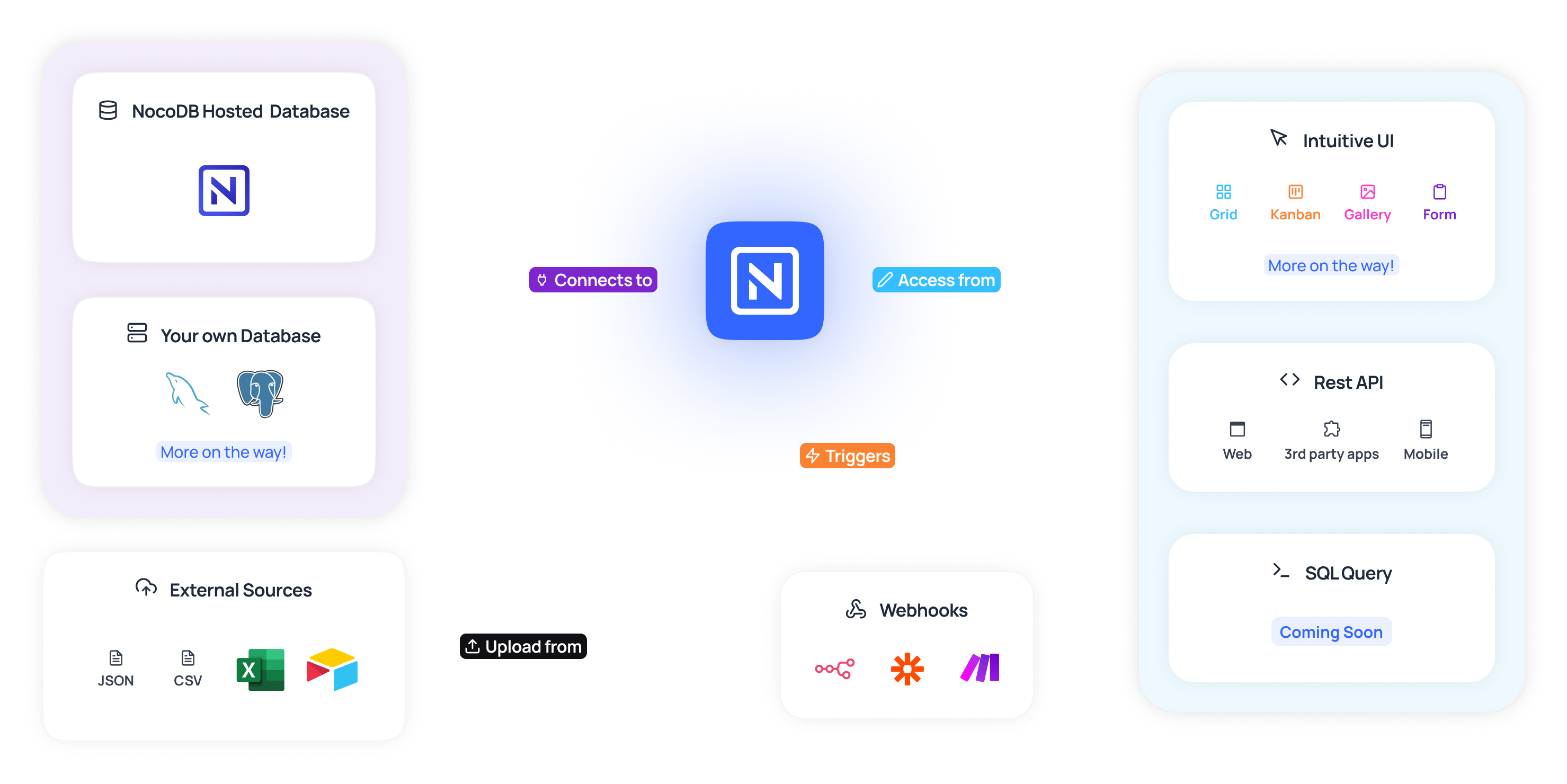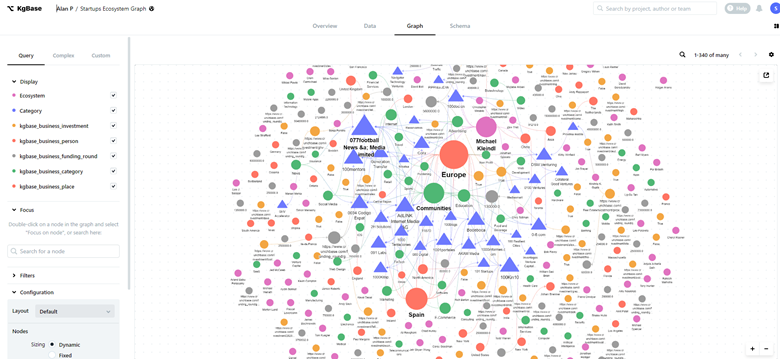Why No-Code is the Future of Open System Database Development for Companies
Why No-Code is the Future of Open System Database Development for Companies
Blog Article
Discover Just How Scalable Data Sources Can Be Utilized Without Coding to Boost Your Organization Operations
In today's fast-paced company environment, the capability to take care of and evaluate information effectively is extremely important. Scalable databases, especially when coupled with no-code options, offer a transformative technique that empowers non-technical individuals to improve procedures. By employing tools that call for no coding experience, companies can enhance their operational capacities while minimizing reliance on IT sources. However, the genuine inquiry exists in understanding exactly how these remedies can be customized to details company requirements and what possible difficulties may develop in their execution. Checking out these elements can illuminate the path to operational excellence.
Recognizing Scalable Databases
Scalable data sources are crucial for modern-day company operations, permitting companies to efficiently handle boosting quantities of data without giving up performance. These databases are made to expand and adapt to the changing demands of an organization, making sure that they can deal with larger datasets and even more intricate questions as organizational requirements evolve.
Comprehending scalable data sources entails identifying their 2 main types: vertical scaling and horizontal scaling. Vertical scaling, or "scaling up," includes adding more power (CPU, RAM) to an existing server to improve efficiency. Alternatively, straight scaling, or "scaling out," requires adding extra servers to distribute the load, which commonly causes better adaptability and mistake resistance.
An additional critical aspect is the architecture of scalable data sources, which can be either non-relational or relational. Relational data sources, such as MySQL and PostgreSQL, are structured and utilize SQL for inquiries, while non-relational databases, like MongoDB and Cassandra, provide more versatility with unstructured data.
Ultimately, comprehending scalable databases is crucial for services intending to take advantage of data as a tactical asset, allowing them to continue to be affordable in a significantly data-driven setting.

Advantages of No-Code Solutions
Unlocking the capacity of no-code remedies empowers services to streamline operations and boost productivity without the requirement for extensive programming understanding. These systems allow non-technical individuals to develop, change, and manage data sources easily, therefore equalizing accessibility to innovation across teams.
Among the main benefits of no-code remedies is their rate of application. Businesses can promptly deploy applications and automate procedures, dramatically minimizing the time invested in advancement cycles. This dexterity makes it possible for organizations to respond quickly to market adjustments and consumer demands, cultivating an one-upmanship.
Additionally, no-code platforms decrease reliance on IT departments for everyday tasks, allowing technological teams to concentrate on even more intricate tasks that call for specialized abilities. This change not just maximizes source allowance however likewise advertises innovation within the organization.
Cost-effectiveness is another benefit, as no-code remedies can decrease growth and maintenance costs. By lessening the requirement for coding proficiency, companies can harness the capacities of their existing workforce without the overhead of hiring additional employees.
Popular No-Code Data Source Equipment
The rise of no-code options has resulted in the emergence of numerous data source tools that accommodate companies seeking efficiency and accessibility. These devices equip users with minimal technological competence to create, take care of, and control databases flawlessly.

Caspio stands out for its ability to develop internet applications without any type of coding. It enables services to produce robust data sources and deploy applications quickly, satisfying numerous market needs. Similarly, Flair uses powerful information and easy to use user interfaces monitoring abilities, enabling companies to develop custom applications customized to their process.

Use Situations in Business Operations
Just how can businesses take advantage of database devices to improve their procedures? Scalable databases offer organizations with powerful capabilities to take care of and examine data without the need for substantial coding expertise. These devices can simplify different company processes, eventually causing enhanced effectiveness and productivity.
One popular usage situation is client partnership management (CRM) Companies can utilize scalable data sources to track consumer communications, preferences, and feedback, making it possible for individualized communication and better solution. By systematizing this info, teams can team up better and reply to client needs in real-time.
An additional considerable application site web is inventory administration. Companies can utilize no-code database devices to keep track of stock degrees, track deliveries, and projection need. This makes sure optimal supply levels, lowers waste, and reduces stockouts.
In addition, job monitoring can take advantage of scalable data sources by allowing teams to take care of tasks, due dates, and sources in a merged platform. With real-time updates and information visualization, project managers can make enlightened decisions.
Obtaining Began With Application
Carrying out scalable data sources in company operations needs an organized approach to ensure effective integration and usage. The very first step is to conduct a detailed demands assessment, identifying certain organization requirements, data types, click here for more and expected growth patterns. This fundamental understanding will certainly direct the option of the appropriate data source remedy.
Following, choose an easy to use, no-code database platform that lines up with your functional goals. no-code. Several contemporary solutions use instinctive user interfaces, permitting non-technical individuals to handle data effectively. After selecting a platform, establish a clear information design that details exactly how information will be organized, accessed, and preserved
Training is vital; make certain that staff member are equipped with the required skills to utilize the database. Take into consideration providing workshops or tutorials to familiarize personnel with the system's performances.
Conclusion
In verdict, the integration of scalable data sources with no-code solutions presents substantial benefits for organization operations. Inevitably, leveraging these innovations can lead to enhanced efficiency and functional efficiency, placing services for sustained growth in an affordable landscape.
One popular no-code data source device is Airtable, which integrates the performance of a spread sheet with the power of a database.Just how can businesses take advantage of data source tools to improve their procedures? Services can make use of scalable databases to track client communications, choices, and feedback, making it possible for personalized communication and far better solution.Executing scalable data sources in organization operations calls for a structured method to make sure effective integration and usage.In final thought, the assimilation of scalable databases with no-code options offers substantial advantages for business operations.
Report this page